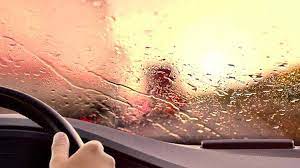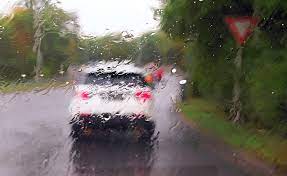
4 Tips for Driving
Living in the Sunshine State, we are accustomed to pleasant weather conditions with short burst of heavy rain. These occasional periods of bad weather can make for dangerous driving conditions, especially if people are not experienced in driving in the rain. The risk of a car accident increases during inclement weather because you may have difficulty controlling your vehicle though all the rain and flooding plus your visibility will be hampered. Finally, your response time may be significantly reduced as you try to navigate through the weather.
To help prepare you for driving in the rain, here are some tips to consider:
1. Check your windshield wipers – If your wiper blades are old, worn, or cracked, they need to be replaced. In the same way, the entire wiper unit, including the motor, could malfunction over time. You should make sure the entire unit is functioning properly and the wipers themselves are clean and free of dirt. When not clean, wipers can instead smear grime and leave streaks further decreasing your ability to see.
2. Inspect your tires – It should be part of your routine vehicle maintenance that your tires are inspected for damages and signs of wear. The tread of a tire is designed to dissipate the water and dirt from the road so that the tire can make solid contact. If the tread has worn down, the likelihood of slipping on a wet road increase. Make sure your tires are in good condition.
3. Slow down – One of the most important things you can do is change your driving habits so that you are driving 5-10 mph below the speed limit and allow a greater distance between your car and the one ahead of you. On a wet road, your stopping distance will be greater as well as the possibility that your may skid. If you drive too fast through water on the road, your tires may skim over the surface (hydroplaning) and you may lose control of your car. Driver cautiously, use your mirrors, don’t use cruise control, and slow down!
4. Stop driving – If the weather is bad, and you find yourself on the road, pull over into someplace safe, park your car, and wait until the rain slows down and you feel comfortable driving again. Make sure that if you are pulling off a road, you fully exit the flow of traffic and ideally you should pull into a parking lot or someplace where both you and your vehicle are safe.
****
While this all may seem to be common sense, you would be surprised how many accidents occur in bad weather because people fail to consider these simple points. Whenever you get behind the wheel of a car, you have assumed a duty to operate that vehicle safely and to make sure it is in good repair. This means that your response to driving in inclement weather needs to be appropriate and that may also mean your response should differ than when driving in normal conditions. If you find yourself the victim of someone else’s negligence, because they failed to drive with care, please contact the Law Firm of Brian S Brijbag at (352) 358-5880 for a free case consultation.

****
Disclaimer
For the general public: This Blog/Web Site is made available by the law firm publisher, The Law Firm of Brian S Brijbag PLLC, for educational purposes. It provides general information and a general understanding of the law, but does not provide specific legal advice. By using this site, commenting on posts, or sending inquiries through the site or contact email, you confirm that there is no attorney-client relationship between you and the Blog/Web Site publisher. The Blog/Web Site should not be used as a substitute for competent legal advice from a licensed attorney in your jurisdiction.
For attorneys: This Blog/Web Site is informational in nature and is not a substitute for legal research or a consultation on specific matters pertaining to your clients. Due to the dynamic nature of legal doctrines, what might be accurate one day may be inaccurate the next. As such, the contents of this blog must not be relied upon as a basis for arguments to a court or for your advice to clients without, again, further research or a consultation with our professionals.
Attorney Brian Brijbag’s Motivation For Going into Law
